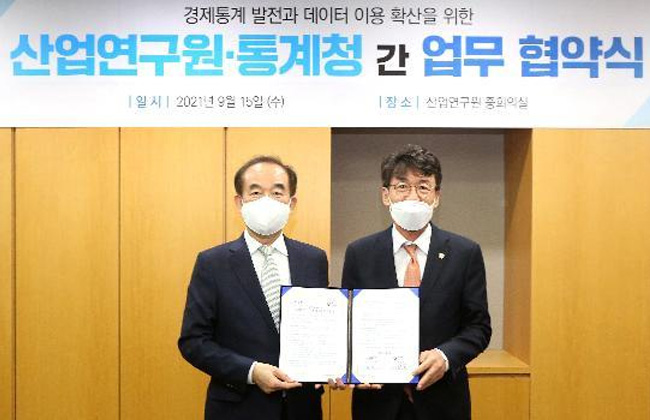Research Reports

The global economy is at a turning point in history when the transition to a new technological and economic paradigm and the transition to the US-China technology and economic hegemony are intertwined. This change provides a window of opportunity for industrial and economic development for latecomers such as North Korea. The purpose of this report is to analyze the major directions of East Asian GVC restructuring and to suggest a new direction for North Korea’s industrialization strategy. This study aims to identify the potential of the GVC participatory development path for North Korea, and suggest policy directions and tasks for inter-Korean cooperation to realize it.
The two drivers of GVC reorganization that will affect the industrial development strategy of East Asian countries are the geopolitical confrontation of strategic competition between the US and China and the change in China’s growth strategy. With China’s transformation into a new growth model, a reorganization of the division of labor with neighboring countries is taking place, and this change will have a profound impact on the development path of neighboring countries.
East Asian countries that have been promoting the GVC participatory development model have no choice but to seek new positioning and strategies. As the most powerful driving force behind GVC restructuring is strategic competition between the US and China, decoupling production bases from China is inevitable to some extent. The more China emerges as a central country, the more China needs its semi-periphery and periphery. North Korea will have more opportunities for GVC participation-type industrial development.
Industrial development in Eastern Europe and Southeast Asia since the 1990s can be compared as a major example of GVC participatory development. In Eastern Europe, FDI attraction following system reform and EU accession, and in Southeast Asia, FDI attraction following improvement of the investment environment, such as bilateral and multilateral trade and investment liberalization agreements, became the main direction of the development strategy. Achievements such as advancement of the industrial structure were also achieved.
The target industries for North Korea’s GVC participatory development will be light engineering, machinery, and electrical electronic industries, which are currently the main industries in developing countries. It is also necessary to pursue future-oriented strategic industry development centering on electric vehicles (EVs) North Korea has a lot of potential in these industries, but in order to realize it, efforts such as reform of the FDI attraction system, the exchange rate system, the global standardization of industry standards, and the expansion of infrastructure must be strengthened. Inter-Korean cooperation also needs to be explored in a new way in various fields, such as a change from a focus on final goods to a focus on intermediate goods, the expansion of the role of Korean global companies in inter-Korean industrial cooperation, and supply chain cooperation that reflects the goal of reducing carbon emissions

The works on this page are licensed for fair use under the provisions of the Korea Open Government License. See kogl.or.kr for more information.
Please enter the security text below
to prevent email collection
Please check the information of the person in charge.
연구과제 제안이 접수되었습니다.
신청이 접수되었습니다.


View Summary
코로나19 발생 이후 대부분의 고용 관심사가 항공 및 여행서비스, 음식·숙박 서비스 등 주로 서비스 업종에 집중된 상황에서 본 연구는 최근 그 중요성이 강조되고 있는 제조업의 고용변화를 살펴보았다. 분석에 따르면, 코로나19 이후 제조업 고용은 비교적 큰 충격 없이 빠르게 회복하는 모습을 보이고 있다. 제조업 고용은 서비스업에 비해 큰 충격 없이 유지되고 있고, 코로나19 직후 2020년 상반기에 약간 하락하였지만 하반기부터 회복 추세를 보이고 있으며, OECD 주요국의 제조업과 비교하여도 일본과 함께 고용 충격이 비교적 작게 나타나고 있다. 그러나 전반적으로 양호한 고용 성적에도 불구하고 제조업 내 특성 별로는 차이가 나타나는 것으로 보인다. 종사상 지위 별로 보면, 임시·일용직, 고용원이 있는 자영업자에서 고용 충격이 상대적으로 크게 나타났고, 상용직과 고용원이 없는 자영업자는 큰 충격이 없는 것으로 나타났다. 제조업 규모별로는 300인 이상의 경우 코로나 발생 초기 약간의 충격 이후 고용이 빠르게 반등하면서 코로나 이전보다 고용이 더 증가한 반면, 이보다 작은 규모의 제조업체들의 경우 고용 회복이 더디게 나타나고 있다. 고용의 중장기, 단기 추세선을 비교한 결과 제조업 업종에 따른 차이를 보였다. 코로나 발생 이전 3년간의 추세선을 2020년 1월부터 연장한 선과, 2020년 1월부터의 실제 자료를 이용한 단기 추세선을 비교한 결과, 의약품은 코로나19 발생 이전부터 시작하여 코로나19 발생 이후에도 견조한 증가세를 유지하고 있으며, 전자부품·컴퓨터, 기타운송장비, 가구는 코로나19 이후 오히려 고용 추세가 개선되었다. 그러나 다수 업종은 코로나 발생 이후 고용이 하락하였는데, 특히, 비금속광물, 1차금속, 금속가공 분야나 인쇄·기록매체 업종에서 하락이 상대적으로 크게 나타났다.
The following information is provided.
inform@kiet.re.krPlease complete the CAPTCHA below.
[전지적키에트시점] (Eng sub)심상치 않은
국내 대기업 움직임??
KIET 시점에서 보는 미래 로봇 산업 전망은
어떨까요?
경제전문가가 알려드립니다!
(산업연구원 박상수 실장)


